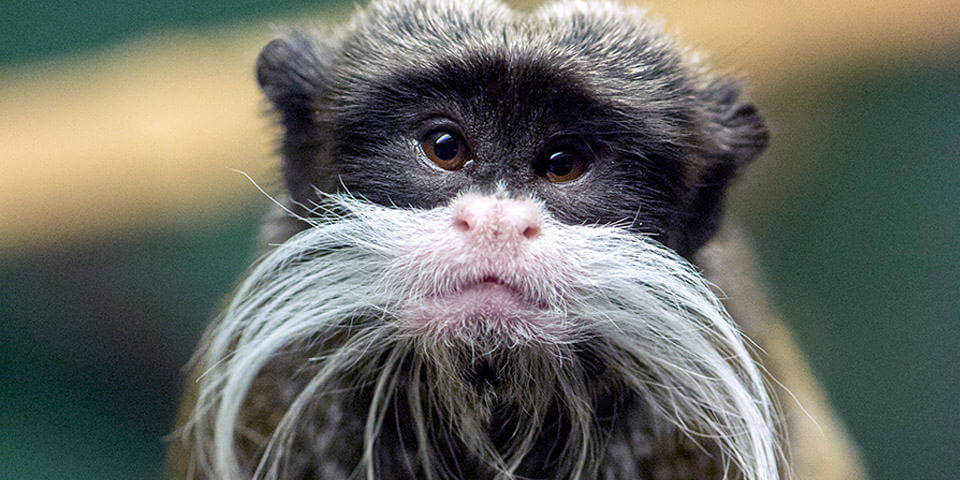Tamarin: A Comprehensive Guide
The Tamarin is a small, colorful primate known for its striking appearance and agile behavior. These tiny creatures are found primarily in Central and South America and play a crucial role in their ecosystems. This article will explore Tamarin’s scientific classification, physical characteristics, habitat, behavior, diet, reproduction, predators, and conservation status. We will also dive into interesting facts, their evolutionary history, and their relationship with humans.
Contents
- 1 Scientific Classification
- 2 Physical Characteristics
- 3 Notable Features:
- 4 Habitat
- 5 Specific Habitat Types:
- 6 Behavior
- 7 Behavioral Traits:
- 8 Diet
- 9 Common Food Sources:
- 10 Reproduction
- 11 Reproductive Traits:
- 12 Predators
- 13 Conservation Status
- 14 Threats to Survival:
- 15 Interesting Facts
- 16 Evolutionary History
- 17 Relationship with Humans
Scientific Classification
- Kingdom: Animalia
- Phylum: Chordata
- Class: Mammalia
- Order: Primates
- Family: Callitrichidae
- Genus: Saguinus (and Leontopithecus for lion tamarins)
- Species: There are over 18 species of tamarins, including the Emperor Tamarin (Saguinus imperator), Golden Lion Tamarin (Leontopithecus rosalia), and Cotton-top Tamarin (Saguinus oedipus).
Physical Characteristics

Tamarins are characterized by their small size, ranging from 13 to 30 cm (excluding the tail) and weighing between 220 to 900 grams, depending on the species. They have long tails that help with balance, but unlike other primates, their tails are not prehensile.
Notable Features:
- Fur Color: Tamarins are known for their diverse and vibrant fur patterns, often in shades of brown, black, white, and orange.
- Facial Hair: Certain species, like the Emperor Tamarin, are famous for their distinctive mustaches.
- Claws: Unlike most primates, tamarins have claw-like nails (called tegulae) instead of flat nails, aiding in climbing trees.
Habitat
Tamarins are found in Central and South America’s tropical rainforests, including Brazil, Peru, Colombia, and Panama. They are arboreal, meaning they spend most of their lives in trees, where they leap between branches with incredible agility.
Specific Habitat Types:
- Lowland Rainforests: Most species prefer dense, lowland rainforests.
- Secondary Forests: Some species adapt to secondary forests, where human activity has altered the environment.
- Coastal Forests: Certain species, like the Golden Lion Tamarin, are found in coastal rainforests near the Atlantic coast of Brazil.
Behavior

Tamarins are highly social animals that live in small groups of up to 15 individuals. These groups usually consist of a dominant breeding pair and their offspring.
Behavioral Traits:
- Communication: Tamarins use a variety of vocalizations, facial expressions, and body postures to communicate. They have high-pitched calls for signaling alarm or maintaining contact with group members.
- Social Structure: Groups are led by the dominant female, who is typically the only one that breeds.
- Territorial: They mark their territories using scent glands and fiercely defend them from other groups.
- Grooming: Tamarins engage in social grooming, strengthening group bonds.
Diet
Tamarins are omnivores with a diet of fruits, insects, small vertebrates, and plant exudates such as sap and gum. They are opportunistic feeders and use their claws to scrape bark and access hidden food sources.
Common Food Sources:
- Fruits: A primary food source, especially during the wet season.
- Insects: They consume various insects, including beetles, ants, and grasshoppers.
- Bird Eggs: Occasionally, tamarins raid bird nests for eggs.
- Small Vertebrates: Some tamarins hunt small lizards, frogs, and even young birds.
Reproduction
Tamarins have a unique reproductive system, often practicing polyandry, where a female mates with multiple males. Only the dominant female in a group typically breeds.
Reproductive Traits:
- Gestation Period: Around 140-150 days.
- Offspring: Tamarins usually give birth to twins, though single births and triplets are possible.
- Parental Care: Males, along with other group members, are heavily involved in the care of the young. The father often carries the infants on his back and brings them to the mother for nursing.
Predators
Tamarins have several natural predators in the wild, including:
- Large Birds of Prey: Eagles and hawks are a major threat due to their ability to snatch tamarins from the treetops.
- Snakes: Some species of snakes, particularly boa constrictors, pose a danger by ambushing tamarins in the trees.
- Felines: Small wild cats like ocelots can prey on tamarins, especially at night.
Conservation Status
The conservation status of tamarins varies by species. While some species, such as the Golden Lion Tamarin, have been the focus of intensive conservation efforts and have seen population growth, others remain critically endangered.
- Golden Lion Tamarin: Listed as Endangered due to habitat loss, but conservation efforts have helped increase their population.
- Cotton-top Tamarin: Listed as Critically Endangered, primarily due to deforestation and illegal pet trade.
Threats to Survival:
- Habitat Destruction: Deforestation for agriculture, logging, and urban expansion has devastated tamarin populations.
- Illegal Wildlife Trade: Tamarins are sometimes captured and sold as exotic pets, further threatening wild populations.
Interesting Facts
- The Emperor Tamarin is named after German Emperor Wilhelm II due to its long mustache resembling the emperor’s facial hair.
- Golden Lion Tamarins are an iconic symbol of conservation efforts in Brazil, with captive breeding programs helping to stabilize their population.
- Tamarins are part of the Callitrichidae family, which also includes marmosets and share many behavioral and physical traits with them.
Evolutionary History
Tamarins belong to the New World monkeys, which split from their Old World relatives around 40 million years ago. They have adapted to life in the dense rainforests of South America, evolving small, agile bodies to navigate their arboreal environment. Their claws are a unique adaptation that sets them apart from most primates, allowing them to cling to tree trunks and extract food more efficiently.
Relationship with Humans
Tamarins have a mixed relationship with humans. In their native habitats, they are often affected by deforestation and other human activities that reduce their forest homes. However, they are also subjects of conservation efforts and can be seen in zoos and wildlife sanctuaries worldwide. The Golden Lion Tamarin is an example of successful human intervention, with captive breeding programs helping to reintroduce the species into the wild.
Tamarins are occasionally kept as exotic pets, although this is illegal in many countries due to the harm it causes both the animals and wild populations.
Conclusion
The tamarin is a fascinating example of the diversity of life in the rainforests of Central and South America. Their complex social structures, unique physical traits, and vibrant personalities make them stand out among primates. While many species face significant challenges due to habitat destruction and illegal wildlife trade, ongoing conservation efforts offer hope for their continued survival. As a key species in their ecosystems, tamarins remind them of the importance of protecting the world’s rainforests and the creatures that call them home.
- Golden Retriever Pros and Cons: What Every Pet Parent Should Know - 15 September 2025
- Cane Corso Dog Breed: Health, Care, and Lifespan - 14 September 2025
- Catahoula Leopard Dogs: Description, Temperament, Lifespan, & Facts - 21 July 2025







